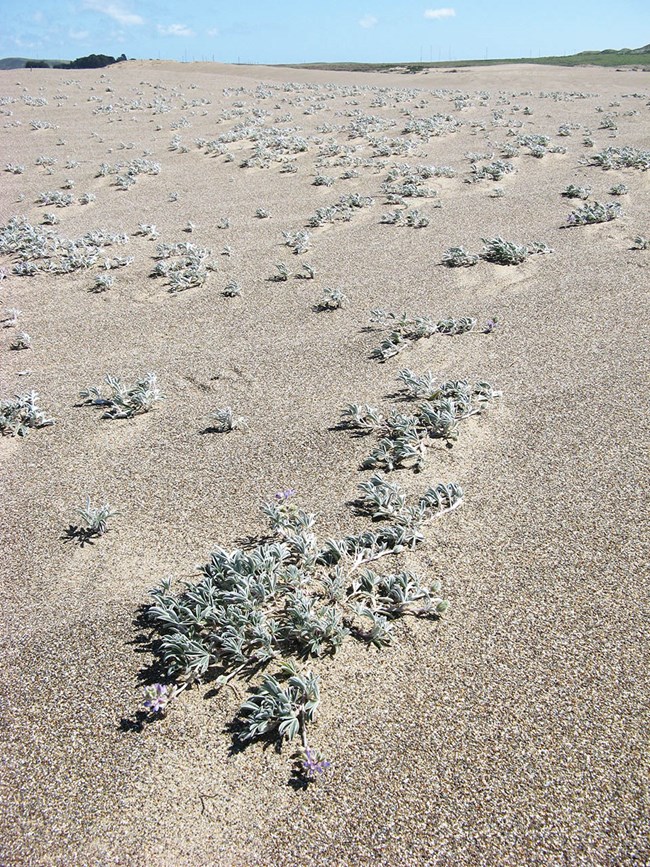Last updated: March 30, 2018
Article
Plant-Predator Connections: Protecting an Endangered Species at Point Reyes

NPS
March 2018 - Since 2005, Point Reyes National Seashore's Vegetation Resources branch has been studying endangered Tidestrom's lupine (Lupinus tidestromii) populations in partnership with Washington University. Their research indicated that some populations of this species could potentially go extinct due to poor reproductive success. They also discovered that native deer mice were eating anywhere from 35% to 80% of flowering stalks with seeds, with the highest rates at Abbotts Lagoon. In fact, seed consumption at this site was consistently high enough for Population Viability Analyses to indicate that the lupines would not persist without some sort of intervention.
An earlier study at the Seashore by Pitts and Barbour from U.C. Berkeley found higher densities of deer mice in areas invaded by non-native European beachgrass (Ammophila arenaria) than in native dune areas. In 2011, the Abbotts Lagoon Coastal Dune Restoration Project removed European beachgrass and iceplant (Carpobrotus spp.) from a 255-acre area just south of Abbotts Lagoon.
Post-restoration monitoring by Washington University found that lupine seed predation rates dropped from an average of 78% to just 3%. The results of this work will help inform future restoration projects, and have also recently been published in the journal Restoration Ecology. Contact Lorraine Parsons for additional details.
